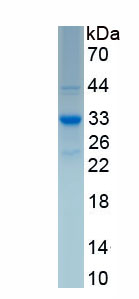Recombinant Selenoprotein P1, Plasma (SEPP1) 

SEPP; SeP; SEP-P1; SELP
Overview
Properties
- Product No.RPB809Hu01
- Organism SpeciesHomo sapiens (Human) Same name, Different species.
-
Applications
Positive Control; Immunogen; SDS-PAGE; WB.
If bio-activity of the protein is needed, please check active protein.
Research use only - DownloadInstruction Manual
- CategoryMetabolic pathwayInfection immunity
- Source Prokaryotic expression, Host E.coli
- Endotoxin Level<1.0EU per 1µg (determined by the LAL method)
- Subcellular LocationSecreted
- Molecular Mass 25.5kDa, Accurate 33kDa(Analysis of differences refer to the manual)
- Residues & TagsTyr60~Lys274 with N-terminal His Tag
- Buffer FormulationPBS, pH7.4, containing 0.01% SKL, 5% Trehalose.
- Traits Freeze-dried powder, Purity > 90%
- Isoelectric Point7.4
Share your citation
Upload your experimental result
Review
Leave a message
Loading...
Sign into your account
Share a new citation as an author
Upload your experimental result
Review
Please attach serial No. on instruction manual


Contact us
Please fill in the blank.
Name*
Organization
Address
E-mail address*
Telephone
Inquiry*
Verification code*

Sequence

Usage
Reconstitute in 10mM PBS (pH7.4) to a concentration of 0.1-1.0 mg/mL. Do not vortex.
Storage
Avoid repeated freeze/thaw cycles. Store at 2-8°C for one month. Aliquot and store at -80°C for 12 months.
Stability
The thermal stability is described by the loss rate. The loss rate was determined by accelerated thermal degradation test, that is, incubate the protein at 37°C for 48h, and no obvious degradation and precipitation were observed. The loss rate is less than 5% within the expiration date under appropriate storage condition.
Increment services
-
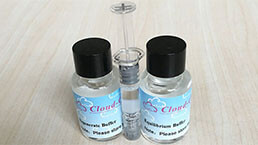 Endotoxin Removal Kit
Endotoxin Removal Kit
-
 BCA Protein Quantification Kit
BCA Protein Quantification Kit
-
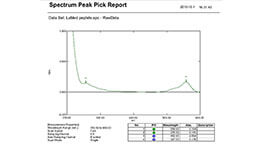 Protein Labeling Customized Service
Protein Labeling Customized Service
-
 Molecular Mass Marker for Protein
Molecular Mass Marker for Protein
-
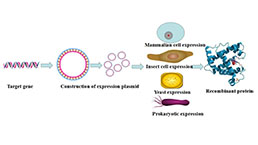 Recombinant Protein Customized Service
Recombinant Protein Customized Service
-
 Monoclonal Antibody Customized Service
Monoclonal Antibody Customized Service
-
 Polyclonal Antibody Customized Service
Polyclonal Antibody Customized Service
-
 Protein Activity Test Experiment Service
Protein Activity Test Experiment Service
-
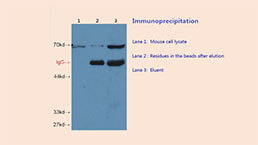 Immunoprecipitation (IP) Experiment Service
Immunoprecipitation (IP) Experiment Service
-
 Buffer
Buffer
-
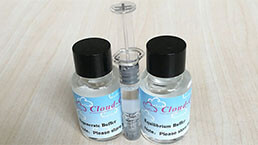 Endotoxin Removal Kit II
Endotoxin Removal Kit II
-
 Real Time PCR Experimental Service
Real Time PCR Experimental Service
-
 Spike RBD Protein (S-RBD)
Spike RBD Protein (S-RBD)
-
 Protein G
Protein G
-
 Protein A
Protein A
Citations
- Serum Selenoprotein P Levels in Patients with Type 2 Diabetes and Prediabetes: Implications for Insulin Resistance, Inflammation, and AtherosclerosisPubMed: 21677040
- Increased Selenoprotein P Levels in Subjects with Visceral Obesity and Nonalcoholic Fatty Liver DiseasePubMed: 23439771
- Trace elements, heavy metals and vitamins in Egyptian school children with iron deficiency anemiaMetapress:Source
- Selenium and its relationship with selenoprotein P and glutathione peroxidase in children and adolescents with Hashimoto's thyroiditis and hypothyroidismPubMed: 26854239
- Selenoprotein P is elevated in individuals with obesity, but is not independently associated withinsulin resistance.pubmed:27524654
- Acute Overfeeding Does Not Alter Liver or Adipose Tissue-Derived Cytokines in HealthyHumans.pubmed:27832637
- DNA damage and oxidative stress response to selenium yeast in the non-smoking individuals: ashort-term supplementation trial with respect to GPX1 and SEPP1 polymorphism.pubmed:26658762
- Evaluation of the Relationship Between Insulin Resistance and Selenoprotein P in Patients with Polycystic Ovary SyndromeDOI: 10.14744/scie.2017.87597
- Serum selenium and selenoprotein-P levels in autoimmune thyroid dieases patients in a select center a transversal studyDOI: 10.1590/2359-3997000000309
- Selenium, selenoproteins and selenometabolites in mothers and babies at the time of birthpubmed:28534447
- Biomarkers of selenium status and antioxidant effect in workers occupationally exposed to mercuryPubmed:29895371
- Comparison of Human Selenoprotein P Determinants in Serum between Our Original Methods and Commercially Available KitsPubmed:29709922
- Non-alcoholic fatty liver disease in the first trimester and subsequent development of gestational diabetes mellitusPubmed: 30470912
- Selenium Levels in Community Dwellers with Type 2 Diabetes MellitusPubmed: 30725267
- Can hepatokines be regarded as novel non-invasive serum biomarkers of intrahepatic lipid content in obese children?Pubmed: 30921653
- Acute swimming exercise, but not exposure to moderate hypoxic conditions reduces circulating selenoprotein P levels in short-term, high-fat diet-fed ratsPubmed: 31236416
- Selenium and selenoprotein P in nonalcoholic fatty liver diseasePubmed: 31493247
- Soil Selenium Concentration and Residents Daily Dietary Intake in a Selenosis Area: A Preliminary Study in Yutangba Village, Enshi City, ChinaPubmed: 32909074
- Higher Serum Selenoprotein P Level as a Novel Inductor of Metabolic Complications in PsoriasisPubmed: 32605214
- Circulating hepassocin level in patients with stable angina is associated with fatty liver and renal function
- Selenium–GPX4 axis protects follicular helper T cells from ferroptosis34413521
- Selenoprotein P-1 (SEPP1) as An Early Biomarker of Acute Kidney Injury in Patients Undergoing Cardiopulmonary Bypass






